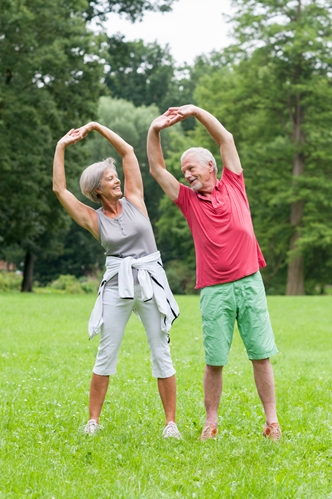Five Senior Memory Exercises for Seniors Memory Care

5 Memory Exercises for Seniors
Staying active is an important part of getting older. What’s the best memory exercises for seniors? Moreover, for seniors, finding a balance with physical activity can be hard to do, but the health benefits from regular exercise go beyond just physical wellness. Aerobic exercise improves brain function by encouraging better blood flow, and can help memory care later in life. According to the NIH, the benefits from physical activity can even help seniors who may already have a disability or disease and aid in restoring memory. Scientists believe the adoption of regular aerobic exercise in your life can also cut the risk of Alzheimer’s almost in half.
“The more fit your body gets, the stronger will be your ‘memory muscle’ — the hippocampus,” said Majid Fotuhi, medical director of the Neurology Institute for Brain Health and Fitness in Lutherville, Md.
If you’re not used to exercising regularly, getting started may seem daunting, and a common fear when it comes to senior fitness is ability. Many worry they are not strong enough to do certain exercises, or that it will be too difficult. However, there are several low impact exercises that can easily be incorporated into your life for senior wellness. It is recommended seniors maintain an exercise regimen of physical activity for 30 minutes a day, 5 days per week. Starting slowly is recommended as well, and steadily increasing the length and intensity of the exercise overtime is the best way to avoid injury and to keep a regular senior fitness plan.
Five low impact activities
- Walking – Walking is an easy activity to keep the body moving. If you’re new to walking for exercise, starting slowly is the best bet to make sure you stick with it for the long run. AARP suggests starting with a 5 or 10 minute walk just a few times each week. After a few weeks, you should be able to walk longer and further. For seniors who already engage in regular exercise, jogging a few times a week can be extremely beneficial for mental health as well as physical health.
- Biking – For many, biking can be easier than walking, as it takes some pressure off of knees and joints. Outdoor bike rides or stationary bike exercises can increase heart rate and oxygen circulation, stimulating brain boosting effects.
- Dancing – A great cardio exercise, this activity can be fun for seniors too, and you’re more likely to repeat an exercise if you enjoy it. Dancing may also reduce the risk for dementia. Classes come in all varieties with varying levels, and can even be a social place for seniors.
- Yoga – Classes for seniors are popping up everywhere, as this low impact activity improves circulation, muscle strength and flexibility. The effects of yoga can also ease arthritis symptoms and prevent joint stiffness, which may encourage you to move more. A body in motion stays in motion, and yoga is more aerobic than you might think.
- Strength Training – While not an aerobic exercise, incorporating strength training just two days a week can be extremely beneficial. The CDC recommends working all the muscle groups every week in order to maintain health and muscle strength. This can be anything from lifting weights, muscle resistance bands, pushups and sit-ups or fun activities like gardening and yoga.
By using one or more of these exercises each week, you will lower your risk for Alzheimer’s and dementia, and start restoring memory. Try taking a walk with a loved one or friend, lift weights that are only a few pounds or go for a bike ride. By making exercise a priority, you will start to see the benefits of senior fitness both physically and mentally after a few weeks.
Need help navigating the complexities of Medicare? Or, maybe you’re trying to find ways to maximize your Medicare benefits. We have the answers – call us at 844-783-2340.
- How Medicare Advantage Plans Cover Seniors’ Vision, Hearing, and Dental Needs - October 29, 2024
- 2025 Medicare Part D Changes: How to Save on Prescriptions - October 25, 2024
- Everything You Need to Know About the 2025 Medicare Changes and How They Affect You - October 21, 2024

